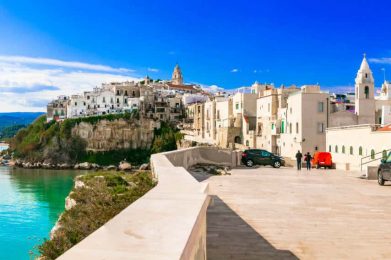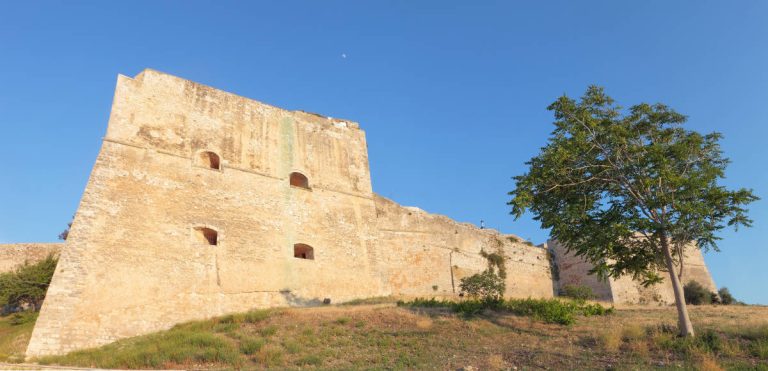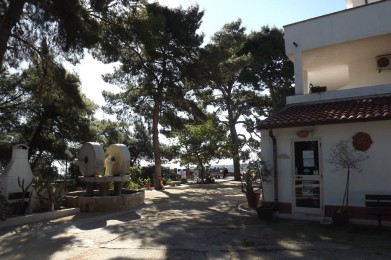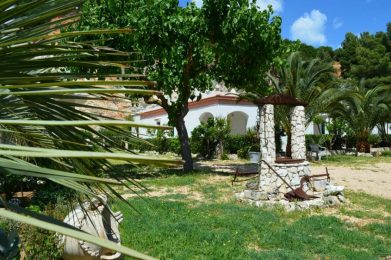Vieste’s Swabian Castle dominates the town’s historic center with its imposing bulk, rising on a limestone cliff overhanging the sea, above the renowned Scialara beach (also known as “Castle beach”). Its strategic location, on the eastern slope of the Gargano promontory, made it one of the main defensive bulwarks of the southern Adriatic for centuries, so much so that it retained the title of the Square of Arms until 1846.
Origins and historical transformations
The castle was first built in the second half of the 11th century, under the rule of the Norman Robert Drengot, count of Vieste. It was originally a stronghold with cylindrical towers and a square body, an integral part of the town’s first defensive system.
During the wars between the Papacy and Emperor Frederick II, the castle and town suffered severe damage at the hands of the Venetians (1240). Only two years later, in 1242, it was Frederick II himself who ordered its reconstruction, turning it into one of the main nodes of his Adriatic coastal fortification project. It is said that the emperor himself stayed there at least twice.
Between the 15th and 16th centuries, the castle was again the protagonist of dramatic events: it suffered assaults by Saracens, notably that of Acmet Pasha in 1480 and Dragut Rais in 1554. It was then renovated in 1559 by Spanish viceroy Pedro Afan de Ribera, who equipped it with artillery and bastions, and made it part of a larger coastal defense system that also included numerous watchtowers.
The 1646 earthquake caused the collapse of the southern part of the complex, which included a chapel, dwellings and a smaller tower. Other significant damage was caused by naval bombardment during World War I, when the castle was hit by artillery from the Austrian destroyer Lika (May 24, 1915).
Architecture and features
The castle’s current appearance reflects changes over the centuries. It has a triangular plan, with three angular spearhead bastions (north, east, and west), incorporating older structures with a circular base. To the south, on the edge of the overhang, once stood structures now lost to collapse.
Surrounding the castle were the city walls, equipped with barbican and gateways, some of which are still visible, such as the historic “Porta ad Alt” near the Cathedral.
A fortress still active
Despite the centuries that have passed, Vieste Castle continues to be a living place: it is currently home to the Italian Navy and internal access is allowed only on special occasions. However, it is still possible to admire the imposing structure from the outside and enjoy the spectacular panorama behind it, overlooking the sea and the historic center of Vieste.
A symbol of the Gargano
The Swabian Castle is not only a military garrison and a testament to defensive architecture: it is a symbol of Vieste’s history, which has spanned the centuries resisting assaults, earthquakes and wars. Its brown silhouette silhouetted against the blue sky and sea is one of the most striking images of the ancient Gargano and tells, stone by stone, its millennia-old vocation for defense and resistance.




